Over time the elements of a lawn, especially the grass, will be lost to the environment. Unfortunately, no lawn is immune to this phenomenon, and it makes your once dense & beautiful lawn …thin and patchy. However, it is not something to worry about. Thinning lawns can be easily fixed with a process called overseeding.
Overseeding means adding more grass to an existing lawn to fill bare spots. It is recognized as an essential part of lawn maintenance. However, do not confuse overseeding with reseeding. Reseeding means pulling up all the grass from your yard and starting a new lawn from scratch.
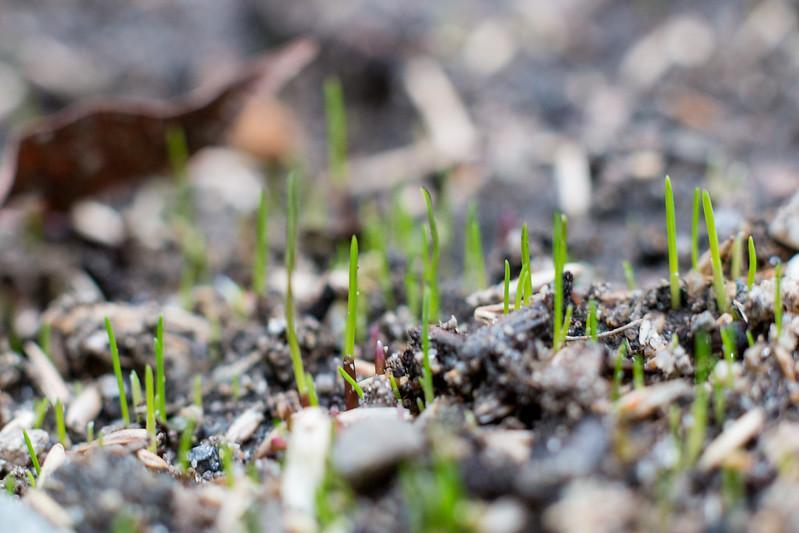
If you do not know how to overseed a lawn, do not worry! All it takes is some basic knowledge, the right tools, and smart timing. So, let’s get started!
Benefits Of Overseeding Your Lawn
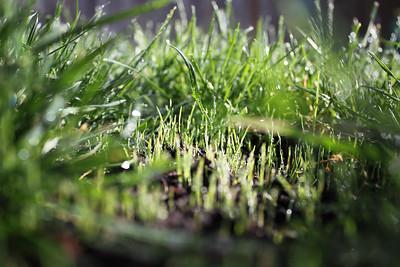
A dense, green lawn creates curb appeal and is a point of pride as a homeowner. However, if your lawn is filled with bare spots, it becomes a bit of an eyesore and an excellent place for the weeds to grow and take over. This is where overseeding comes in. It is a natural way of choking weeds in your yard and keeping your turf dense.
Let’s talk about these and some other benefits before getting into when and how you can overseed your lawn.
Reduces Erosion
The soil will be exposed to environmental elements if there are bare spots in your yard. Over time, this can create depressions and holes in your lawn that look unsightly and are a safety hazard. You can solve this issue by overseeding the bare spots.
Grass roots do an excellent job at binding the soil together. Also, grass reduces soil exposure to environmental elements such as water runoff, reducing erosion.
Improves Appearance
A lawn riddled with bare spots is not just unsightly but also a welcoming ground for weeds to grow. Overseeding the yard solves this problem and creates a thick, uniform-looking lawn. And it is not just easy on the eyes but also fabulous underfoot.
Reduces Chemical Usage
For some people, establishing a thick turf means using tons of pesticides and chemical fertilizers. However, you can obtain just as good results by overseeding your yard. Moreover, it is cheaper and way more eco-friendly.
Chokes Out Weeds
A dense turf is the best defense against lawn weeds. Weeds need time and space to establish themselves in a place. So, weeds won’t stand a chance if you eliminate all the thin and bare spots from your yard with overseeding.
Increases Turf Thickness
Nothing is better than walking on a thick, soft carpet of lawn grass. Every lawn owner strives for it, and you can achieve this by overseeding your yard.
RELATED: Overseeding A Lawn With Weeds: A Simple And Easy Guide
When To Overseed Your Lawn?
Just as with everything in lawn care, overseeding also requires proper timing. Doing it at the wrong time can do more harm than good, and you will also be wasting your time and money. So, what is the best time to overseed a lawn?
Well, it all comes down to where you live and what type of grass you are trying to overseed with. Grasses are divided into two categories: cool-season grasses and warm-season grasses. So, let’s talk about the best time to overseed each type!
Best Time To Overseed Cool-Season Grasses
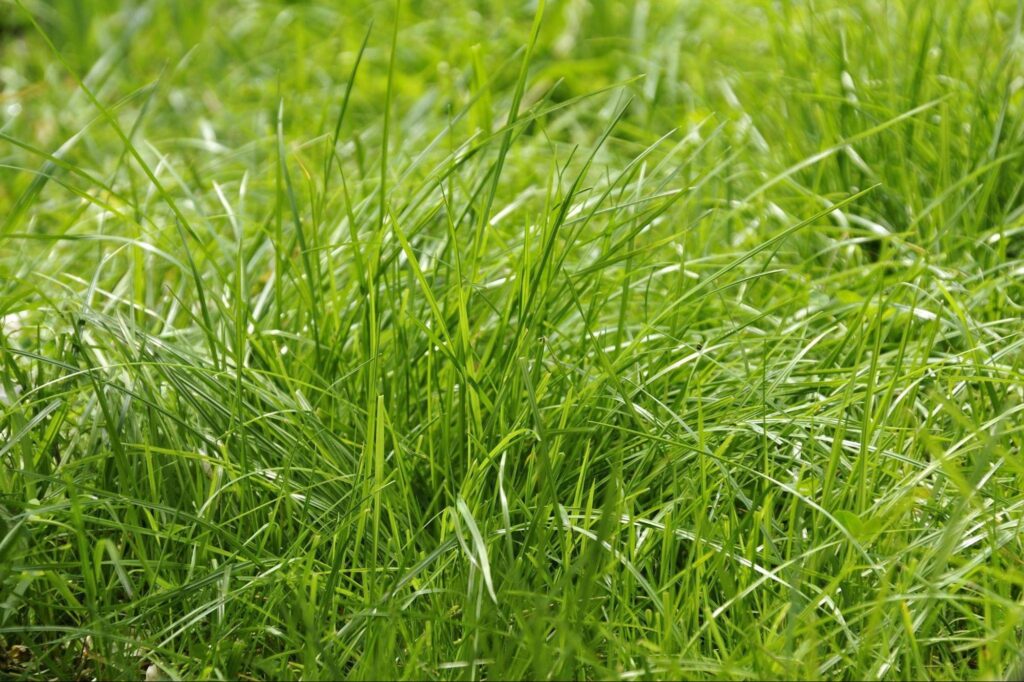
Cool-season grasses grow exceptionally well in the cool weather of fall and spring. They are most commonly planted in the northern part of the United States. Moderate summers and frigid cold weather are no problem for these grass types.
Examples are: Tall fescue grass, Kentucky bluegrass, Perennial ryegrass, and Creeping bentgrass. Experts suggest planting cool-season grasses at least 45 days before the first expected frost of the year.
This gives grass seedlings enough time to establish themselves and tolerate the cold weather in the winters ahead. When it comes to overseeding a cool-season grass, it should be done in spring or fall.
Although, you can overseed cool-season grasses in fall and spring. Priority should be given to fall as there are fewer weeds to compete with for space, water, and nutrients.
Best Time To Overseed Warm-Season Grasses
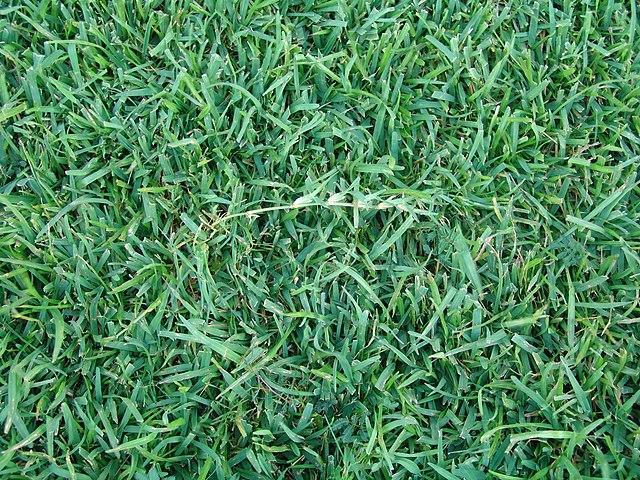
Warm-season grasses thrive and grow best in temperatures above 75 degrees F. They are most commonly used in the south, southeast, and southwest parts of the United States. Examples include Bermuda grass, St. Augustine grass, and Bahia grass.
Warm-season grasses become dormant in fall and winter. If the summer is especially dry and hot, warm-season grasses might also undergo summer dormancy. The best time to plant warm-season grasses is in late spring or early summer.
When it comes to overseeding, warm-season grasses should be overseeded when the nighttime temperatures are consistently in the 60s. Usually, this happens in October.
Overseeding Cool-Season Grasses With Warm-Season Grasses & Vice Versa
As you must have already learned by now, no type of grass stays green all year long, whether cool-season or warm-season. To deal with this issue, some lawn owners overseed their cool-season lawns with warm-season grass when the summers approach or vice versa.
Tools Needed To Overseed Your Lawn
Here is a list of tools, equipment, and materials you will need to overseed your lawn. Make sure you have as many of these things as possible to save yourself from the hassle and get the best out of overseeding your yard.
- Core aerator (optional)
- Dethatcher/power rake/verticutter (optional)
- Enriched topsoil
- Fertilizer spreader
- Grass seed
- Lawn mower
- Lawn starter fertilizer
- Rake
RELATED: How To Fix Lawn Mower Sputtering: Common Reasons & Easy Fixes!
How To Overseed Your Lawn?
Now that you know when you should overseed your lawn and what you will need for it, we can move on towards discussing the steps of overseeding a yard. Some of these steps might be optional, depending on the condition of your lawn.
Dethatch & Aerate The Lawn
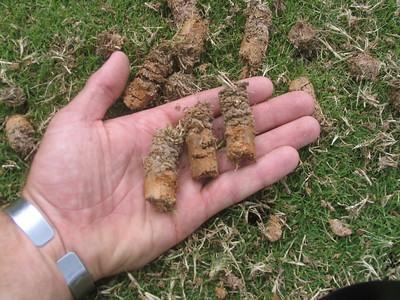
Proper seed-to-soil contact is necessary for seed germination. So, when planting grass seeds to overseed your lawn, you will need to dethatch and aerate your lawn first, if required. Thatch can become a physical barrier between grass seeds and soil, whereas compacted soil makes it difficult for the grass roots to penetrate.
Depending on the condition of your lawn, you can either dethatch it with a simple rake, or you might need to use a dethatcher. Similarly, the method you choose for aeration depends on the extent of soil compaction in your yard.
Mow The Lawn

The next step is to mow your lawn. As with dethatching, the aim here is to increase the contact between seeds and soil. If your grass is long when overseeding, chances are some grass seeds won’t be able to reach the soil surface.
It will decrease the seed germination rate, and you might end up where you started with a thin and patchy turf again. So, make sure you mow the grass short enough so that the grass seeds can easily reach the surface of the soil.
Short grass will also allow more sunlight to reach the new grass seedlings, which they will need as they grow up from the ground.
Amend The Soil
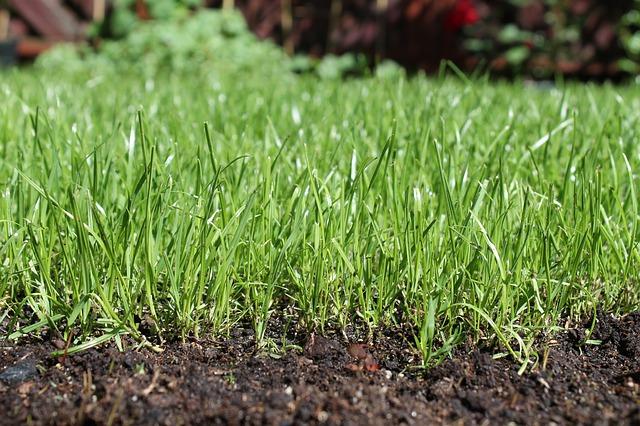
Another great thing to do before you overseed your lawn is to amend the soil. However, do not confuse soil amendment with fertilizing the soil. For instance, sulfur amendments treat alkaline soil and make it more neutral and acidic.
Whereas lime amendments are targeted at resolving the acidity issues of a lawn. It is highly recommended that you get a soil test before you overseed your lawn. A soil test will help you identify what amendments need to be done for the grass seeds to grow best.
For instance, if a soil test indicates fertility issues in your yard, you can simply treat your lawn with compost for sandy soils and peat moss for clay soils to improve the nutrient content of the soil and also improve its texture.
Spread The Grass Seed
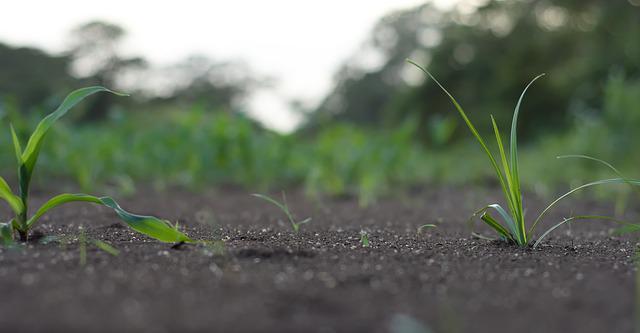
Once the soil is ready, you can spread seeds on your lawn. First, ensure you overseed your yard at the right time based on the grass type and local climate. You can start the overseeding process by loading seeds into a seed spreader.
Following that, spread about 15 to 20 seeds per square inch of the yard. However, remember that the correct seed density will be dependent on the grass seed you are using and the lawn’s thickness; some yards might need fewer or more seeds!
Also, do not add too many seeds when overseeding your lawn. It is a waste of resources and will cause unnecessary competition between the growing grass seedlings.
Cover The Grass Seeds
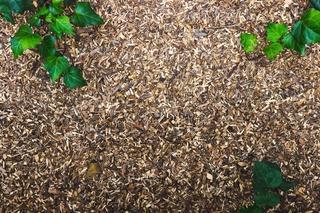
After spreading the grass seeds in your yard, ensure they are safe from hungry birds and elements. If the existing grass is thick enough, you do not need to add an extra cover on top to protect the grass from blowing wind or flowing water.
However, if the existing turf is too thin, you must cover the grass seeds. You can do it with topsoil, compost, or mulch. However, make sure that the cover is not so thick that it suffocates the existing grass and new seedlings.
RELATED: Will Grass Seed Grow If Not Covered With Soil? Sowing Seeds For A Perfect Lawn
Apply A Starter Fertilizer
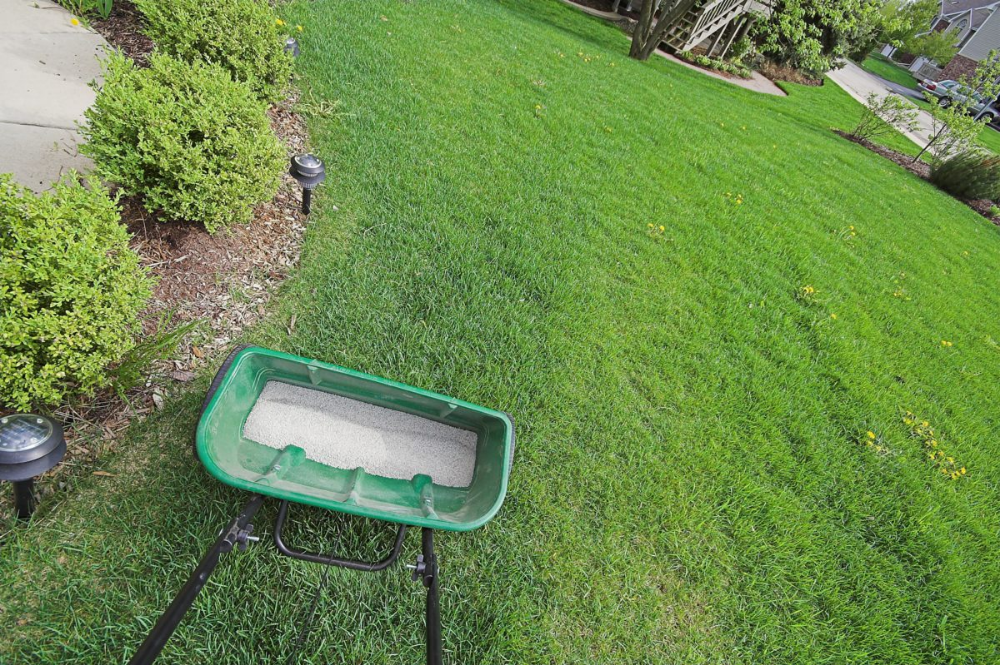
Depending on the soil test results, choose the best fertilizer for your lawn and scatter it all over the area you have overseeded. Depending on the size of your yard, you can use either a broadcast spreader, handheld spreader, or a snap spreader.
If you do not have the soil test results, do not worry. You can treat the grass seed with a lawn starter food. It contains all the elements that are necessary for grass growth. However, make sure that you do not overapply.
Water The Lawn
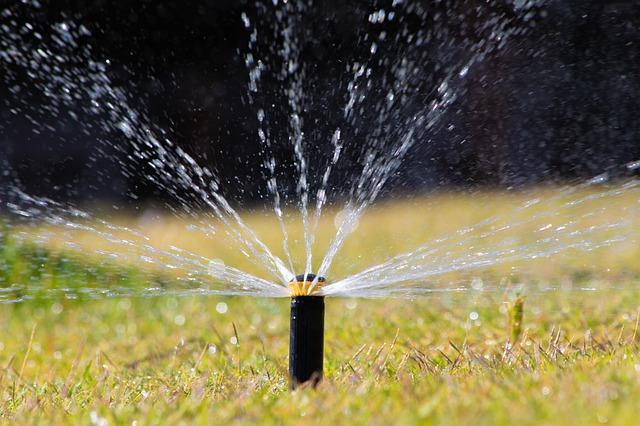
Following overseeding and fertilizing the lawn, you will need to keep the seeds moist. For the first few weeks, you will have to water the lawn every day. We suggest that you try to water the yard in the early morning to maximize the water intake.
However, you do not want to overwater the lawn as the seeds can wash away with the flowing water. Keep watering the grass daily until the new grass is around an inch tall, and then slowly reduce the watering frequency.
Avoid Mowing Or Heavy Traffic

Following overseeding your lawn, avoid heavy foot traffic. This can push the grass seed too deep into the ground where they will not be able to grow. Moreover, when the grass grows, avoid mowing it until it attains a reasonable height. Mowing too soon can put the new grass under stress, negatively affecting its growth and survival.
Frequently Asked Questions
Will grass seed grow if just thrown on the ground?
If you simply throw a bunch of grass seeds on the ground, some of them will grow. However, by throwing seeds like this and not correctly planting them, you will get a few patches of grass here and there instead of a full-fledged lawn.
How do you reseed or overseed a lawn?
If you want to overseed your lawn, you only need to mow the existing grass short enough to give the seeds enough space to reach the soil and grow. However, when reseeding, you must remove all the grass from the lawn and start a new lawn from scratch.
Do I need to aerate before overseeding?
If you have compaction issues in your yard, you must aerate the soil before overseeding. It will improve seed-to-soil contact and allow more air, nutrients, and water to penetrate the ground.
Should I fertilize before or after overseeding?
You can fertilize both before and after overseeding. Both methods work equally well to feed new grass. Just make sure that you get a soil test to identify which fertilizer is the best and also avoid over-fertilizing your lawn.
Does overseeding help with weeds?
Bare spots in the yard are a welcoming place for weeds to grow. Overseeding can help you get rid of these bare spots and establish a dense and thick turf, preventing weeds from establishing and taking hold of your yard.
Sources For Further Reading
Lawn Renovation & Overseeding – Center for Agriculture, Food, and the Environment, University of Massachusetts Amherst
Lawn Aeration and Overseeding – University of Illinois Extension Service
How to Overseed a Lawn – Iowa State University Extension & Outreach







